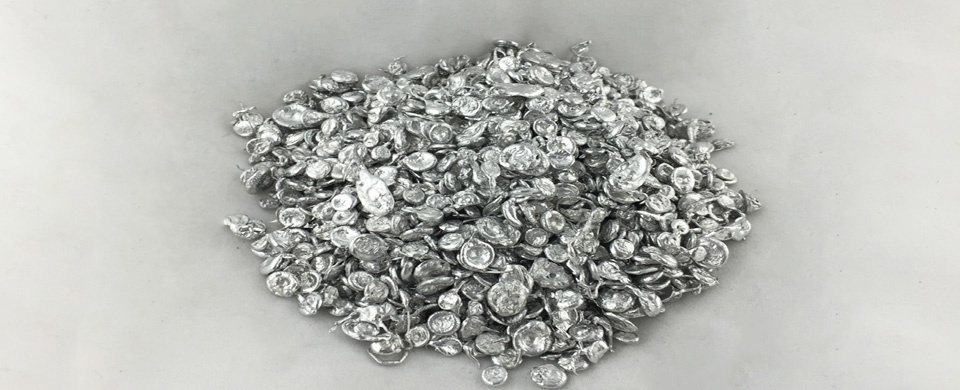The Hazards Of Excessive Cadmium Consumption
In today’s world, the interaction between industrial development and environmental health has attracted considerable attention, particularly with respect to the prevalent issue of heavy metal pollution. Among these pollutants, Cadmium is of special concern because it has no recognised essential function in human physiology and poses significant health risks due to its widespread occurrence.
Introduction to Cadmium
Cadmium is a naturally occurring element found in the Earth’s crust and is often associated with zinc, lead and copper ores. Although it occurs naturally, Cadmium is primarily released into the environment by anthropogenic activities such as smelting, mining and the extensive use of phosphate fertilisers. Unlike other elements that might confer some biological benefit, Cadmium is unnecessary and harmful to living systems. Its industrial applications include battery manufacture, pigments and coatings, which lead to its circulation in the ecosystem and eventual accumulation in the food chain. Researchers estimate that approximately 22 000 tonnes of Cadmium are introduced into the soil annually.

Health Organisations' Stance on Cadmium
The hazards of Cadmium are acknowledged by leading health organisations. The World Health Organization classifies Cadmium as one of the primary contaminants in the food supply, indicating its presence in agricultural and aquacultural products. The International Agency for Research on Cancer (IARC) categorises Cadmium as a Group 1 carcinogen, thereby confirming its potential to cause cancer in humans. Moreover, the Agency for Toxic Substances and Disease Registry (ATSDR) ranks Cadmium seventh on its list of substances that pose a considerable risk to public health.
Acute Exposure to Cadmium
Acute Cadmium toxicity is evident from distinct and immediate symptoms following a high-dose exposure. Industrial incidents, inadequate handling of Cadmium-containing substances and even certain food sources may result in acute Cadmium poisoning. Clinical signs include gastrointestinal disturbances, with symptoms such as nausea, vomiting and abdominal pain, and may extend to more severe neurological and respiratory effects. These responses result from the cytotoxic effects of Cadmium and necessitate immediate medical intervention in suspected poisoning cases.
Subchronic and Chronic Cadmium Toxicity
The toxic effects of Cadmium are particularly evident in its chronic exposure profile. Chronic exposure occurs over an extended period, often via low-level but continuous contact with contaminated food, water and air. This sustained exposure facilitates the accumulation of Cadmium in the body, especially in the kidneys and liver, which are vital for detoxification and metabolic processes. The gradual impairment of renal function is demonstrated by proteinuria—the presence of excess proteins in the urine—and other indicators, such as aminoaciduria and glycosuria, which signify kidney damage. Cadmium also disrupts bone metabolism by displacing calcium ions. Consequently, bone mineralisation is reduced, thereby increasing the risk of fractures. This interference in bone homeostasis may lead to osteoporosis and other bone disorders. The biological half-life of Cadmium in the human body ranges between 10 and 30 years, which complicates efforts to reduce the body burden even after exposure has ceased.
Strategies for Mitigation and Prevention
Addressing the challenges posed by Cadmium requires a multi-tiered approach that incorporates both individual measures and collective regulatory initiatives. At an individual level, heightened awareness of Cadmium sources and adjustments to diet and lifestyle can reduce exposure. A balanced diet that is rich in calcium, iron and zinc has been shown to decrease Cadmium absorption, and limiting the consumption of foods known to have high Cadmium concentrations, such as certain shellfish and organ meats, is advised. At the regulatory level, stringent environmental legislation is required to control Cadmium emissions and contamination. Improvements in industrial methods and the promotion of recycling and recovery of Cadmium are necessary to lower its release into the environment. Furthermore, regular monitoring of Cadmium levels in food and water, together with public health initiatives that inform the community about the risks of Cadmium exposure, are essential given that such measures help to reduce public exposure to this contaminant.
Conclusion
The risks associated with excessive Cadmium intake range from acute to chronic effects, thereby underscoring the significant toxicity of the metal. Leading health organisations recognise Cadmium as a substantial public health issue, and concerted efforts are required to reduce its impact. A combination of individual vigilance and strict regulatory controls can lower the risks, thereby protecting public health from this environmental contaminant. In addressing these challenges, it is important to recognise the role of suppliers such as Stanford Advanced Materials (SAM) in the responsible supply and use of Cadmium materials. Their commitment supports industrial and technological progress and reinforces the necessity for strict adherence to recognised standards.

 Bars
Bars
 Beads & Spheres
Beads & Spheres
 Bolts & Nuts
Bolts & Nuts
 Crucibles
Crucibles
 Discs
Discs
 Fibers & Fabrics
Fibers & Fabrics
 Films
Films
 Flake
Flake
 Foams
Foams
 Foil
Foil
 Granules
Granules
 Honeycombs
Honeycombs
 Ink
Ink
 Laminate
Laminate
 Lumps
Lumps
 Meshes
Meshes
 Metallised Film
Metallised Film
 Plate
Plate
 Powders
Powders
 Rod
Rod
 Sheets
Sheets
 Single Crystals
Single Crystals
 Sputtering Target
Sputtering Target
 Tubes
Tubes
 Washer
Washer
 Wires
Wires
 Converters & Calculators
Converters & Calculators
 Write for Us
Write for Us


 Chin Trento
Chin Trento



